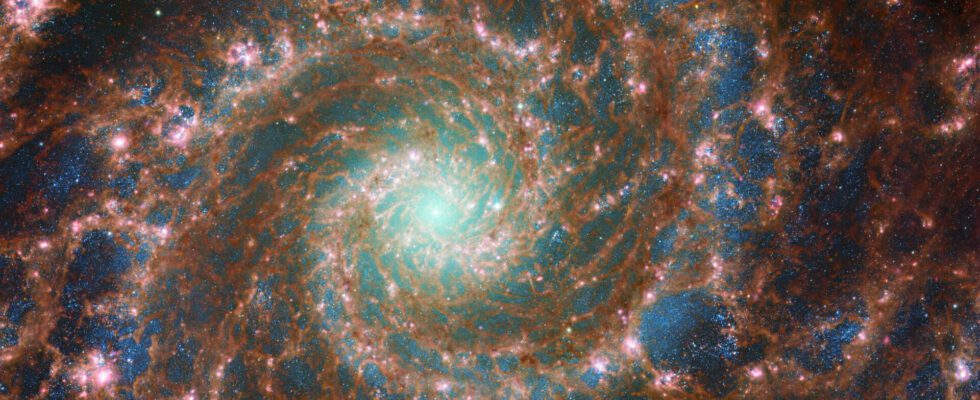Astronomers in India have picked up a radio signal coming from a galaxy nearly 9 light years from our planet, so this is the farthest ever recorded.
It is an exceptional witness to the evolution of the universe, which could allow us to learn more about the first stars.
A postcard from a galaxy far, far away
SDSSJ0826 + 5630 is the sweet name of the galaxy from which comes the radio signal picked up by astronomers using the giant Metrewave radio telescope located in Pune, India. Composed of 30 parabolic antennas, the radio telescope picked up a radio frequency emitted at a distance of 8.8 billion light-years from Earth. This signal represents an emission line corresponding to neutral hydrogen, that is to say the fundamental constituent of the non-ionized universe.
Since the universe is estimated to be around 13.7 billion years old, this signal represents a very important potential source of information since it was emitted when the universe was only 4.9 billion years old. It could shed new light on the formation of the latter, as indicated in the study report published in the Monthly Notices of the Royal Astronomical Society. This report also makes it possible to learn that the signal could have been captured thanks to the gravitational magnifying effect, which, roughly, amplified it thanks to an object located between us and the observed galaxy.
A witness of the primitive universe
So far, the most distant similar signal ever observed came from a cosmic object located 4.4 billion light-years away, which gives a good idea of the importance of the recent capture. Moreover, these signals are extremely difficult to pick up and the distance does not help matters. Neutral hydrogen is therefore a real treasure for observers of the universe, since these atoms were formed during
the “dark age”, about 400,000 years after the Big Bang, when electrons and protons bonded with neutrons. They therefore sometimes preceded the formation of the first stars and the first galaxies.
Indeed, when a star forms, it emits ultraviolet light, which has the effect of ionizing the hydrogen atoms, which lose their neutrality. During the formation of stars, the intensity of ultraviolet rays decreases, and certain ionized hydrogen atoms become neutral again. To put it simply, the study of the signal will allow us to better understand the formation of stars and this famous “dark age”. Finally, note that the first results have made it possible to determine the gas composition of the galaxy SDSSJ0826 + 5630, which would be extremely massive.
Source : FastCompany

36